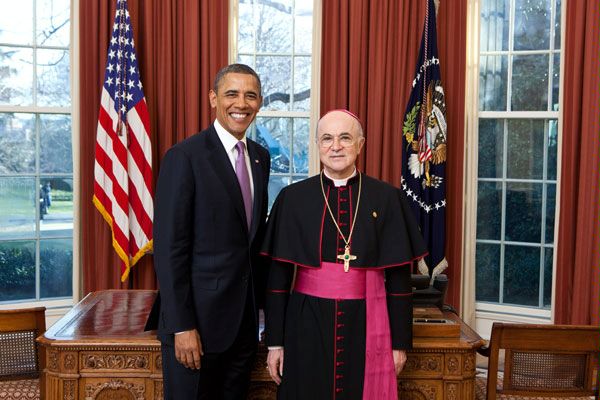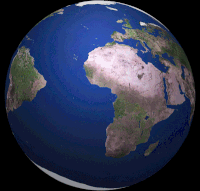In a world where technology has forced the news cycle to speed up, the constantly-changing developments that have engulfed the Catholic church since last summer have required readers (and those on the religion beat) to wade through large amounts of information filtering through social media feeds.
Lost in all the news barrage sometimes are pieces that make you sit up and ponder the ramifications of all these sordid revelations regarding the clerical sex abuse crisis. More importantly, what are the ramifications are for the church’s hierarchy.
The big story remains who knew what and when. Who’s implicated in potentially covering up the misdeeds of now-former Cardinal Theodore McCarrick over the years? The implication here is that the cover-up — if that’s the word you want to use — goes beyond Pope Francis, but back in time years to when Saint Pope John Paul II was the head of the Roman Catholic church.
Last August, Archbishop Carlo Maria Vigano released an 11-page letter describing a series of events in which the Vatican — and specifically Francis — had been made aware of McCarrick’s immoral behavior years ago. Vigano claimed Pope Benedict XVI had placed restrictions on McCarrick, including not allowing him to say Mass in public. Vigano alleged that Francis reversed those sanctions. In the letter, Vigano, a former papal ambassador to the United States, said Francis “knew from at least June 23, 2013 that McCarrick was a serial predator who attacked young men. He knew that he was a corrupt man, he covered for him to the bitter end.”
Over the past seven months, the allegations have yielded few answers. McCarrick was recently defrocked — the church’s version of the death penalty — but little else has been made public about the timeline. A news analysis piece by veteran Vatican journalist John Allen, writing in Crux, makes some wonderful points. His piece, under the headline “Vigano may have made it harder to get to the truth on McCarrick,” has a series of wonderful strands worth the time to read. It also gives a roadmap for reporters on the beat and editors to look at and track down.
Here’s a breakdown of the piece, chopping off the various strands worthy of a deeper investigation. Right from the start, Allen gives us this thesis:
Under the law of unintended consequences, however, it’s becoming steadily clearer that Vigano’s bombshell actually may have made it harder, not easier, to establish exactly what the Vatican knew, and when, in the McCarrick saga.
(The caveat “presumably” is obligatory, since there are countless theories about what Vigano’s real motives were in leveling his j’accuse, and finding the truth doesn’t figure especially high in some of them.
In a nutshell, there are bishops out there — and I know this, because I’ve spoken to several – who support a thorough investigation of the McCarrick case, especially on the Vatican end, but who now hesitate to say so publicly for fear of being associated with Vigano and what’s seen as the ideological crusade against Francis he represents.
It is worth noting, as Allen does, that a Vatican statement released last October indicated the pope had ordered a review of its files regarding McCarrick “in order to ascertain all the relevant facts, to place them in their historical context and to evaluate them objectively.”
The statement added this ominous warning: “It may emerge that choices were made that would not be consonant with a contemporary approach to such issues.”
Regarding that, Allen makes this key observation:
To date, however, no public disclosure has been offered as to the results of that review. (Granted, it may be unlikely there’s any “smoking gun” in the archives proving that a given official actually knew for a fact that McCarrick was abusing minors and chose to conceal it, but at the very least it would be helpful to know if missed opportunities occurred, and on whose watch.)
That the coverup is often bigger than the crime is something political reporters know well. From Presidents Richard Nixon to Bill Clinton to Donald Trump, who knew what and when sometimes matters just as much — if not more — than the crimes. In McCarrick’s case, there would not have been more crimes had he been defrocked years earlier and not allowed to climb the curia’s ranks.
Figuring out where the bodies are buried, a newsroom cliché but very much a true observation, is the key to any story. The Pentagon Papers and Watergate scandal of the 1970s remain two very good examples from American politics were documents and whistleblowers helped shape an entire generation in Washington, D.C.
The Vatican needs that same sort of shakeup. Editors should be asking lots of questions of reporters in the search for this international story. While the Italian press and conservative Catholic media have done a solid job on this ongoing story, there needs to be more from mainstream news sites. Fox News even tried to recently find McCarrick, hiding out in Kansas since the scandal erupted, in a piece that may indicate this is now a “conservative media” story.
A lack of resources and interest in “religion stories” are part of the problem. The other problem is the inconvenient truths digging too deep can uncover. Allen makes this very strong point:
Around Roman water coolers, some believe the silence on McCarrick is due to the fact that the outcome could stain the legacy of St. John Paul II and some of his key aides, including Cardinal Stanislaw Dziwisz, the pontiff’s priest secretary, and Cardinal Angelo Sodano, John Paul’s Secretary of State. Both men were in power as McCarrick made his way up the ladder, and both are still alive.
Others believe that the reticence on McCarrick is due to concerns that there might be some merit in Vigano’s charges — if not that Francis was directly aware of abuse allegations and ignored them, at least that he chose not to pursue the rumors vigorously.
In any event, it’s been more than five months since the Vatican promised a review of its files, and nothing has been reported. One obvious question is why American bishops, either publicly or privately or both, aren’t being more vigorous in demanding that the Vatican deliver, since they’re the ones most exposed to pastoral blowback over the failure to do so.
For me, this is the key takeaway of Allen’s extraordinary analysis. JP II was canonized a saint in April 2014, alongside Pope John XXIII, in a move most Catholics welcomed. At John Paul II’s funeral in 2005, the masses in St. Peter’s Square chanted “Santo Subito!” — Italian for “Sainthood Now! — in a sign of their love for the globe-trotting pontiff. What would happen to that sentiment should it be revealed that he even had an inkling of McCarrick’s actions?
In the case of Dziwisz and Sodano, both men were very close to JP II. Dziwisz served as the former pontiff’s personal secretary, while Sodano was the Holy See’s secretary of state and at the time one of the world’s most powerful religious figures. What if one (or both) knew about McCarrick and did nothing about it? Bothe men are still alive.
Revelations regarding any of these men would tarnish what has largely been viewed as a positive pontificate with an enduring legacy. The same pontificate that helped defeat communism in Eastern Europe and inspired a rise in priestly vocations responsible for covering up for a predator?
Who knew what and when? The answers to those questions would shake the Vatican to its core. However, only with the truth — and good journalism — can the church find real solutions to its problems and avoid the mistakes of the past.










